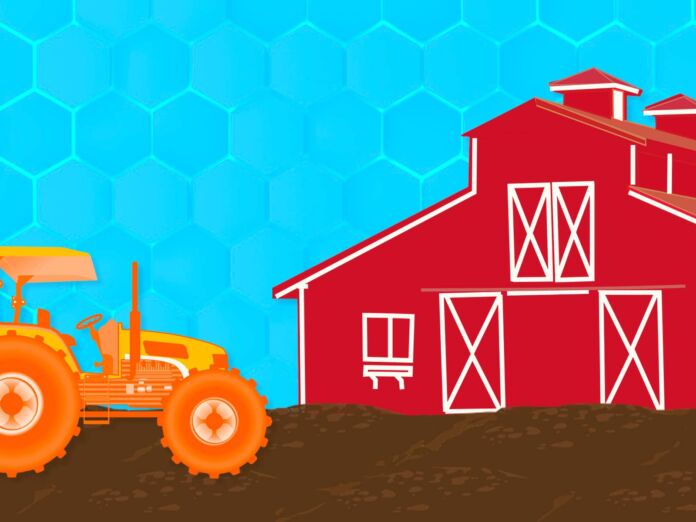
Farmers across the world are plagued with challenges ranging from the increasing demand for food, shortage of natural resources, the rising cost of labor, and increasing regulations towards sustainable farming. To feed more than 10 billion people by 2050, the agriculture industry needs to increase its production capacity by 70 percent (compared to 2009), creating a need for better solutions.
Moreover, agriculture accounts for 70 percent of freshwater usage globally, and 50-60 percent is wasted due to inefficient application. Digital technologies hold tremendous potential to address these issues and transform the sector by improving the efficiency of farming methods, resulting in better utilization of resources and energy.
“To feed more than 10 billion people by 2050, the agriculture industry needs to increase its production capacity by 70 percent (compared to 2009).“
9 Key Digital Solutions
Transforma Insights’ recent report, ‘Digital Transformation (DX) in the Agriculture Sector’ identified nine key solutions in the agriculture sector that are enabled by digital transformation.
#1: Crop Management
Monitoring of crop, soil, and plant conditions via in-field sensors or satellite imagery by collecting and analyzing data such as temperature, moisture, and fertility. These solutions can reduce water consumption by 15-30 percent by allowing farmers to adjust their irrigation techniques based on comprehensive soil probes. It also helps reduce site-specific application of fertilizers, nitrogen, and pesticides, resulting in reducing production cost by around 15 percent and increasing the yield by 15-20 percent.
#2: Automatic Irrigation
Automation of irrigation activity based on data collected from crop management sensors, smart weather stations, weather reports, and other environmental factors. Automated irrigation systems further enhance water savings achieved by Crop Management solutions. Additionally, they help overcome the need for farmers to physically visit the field to switch on and off the pumps, leading to savings in fuel for travel.
#3: Livestock Management
Use of digitally transformative technologies for monitoring the health and location of livestock. Livestock management solutions are being deployed across various use cases, including healthcare management, heat detection, calving management, feed management, weight management, and more.
These technologies in livestock management limit administrative labor and theft losses and ensure early detection of diseases, thereby reducing operational expenses. They also significantly reduce veterinary bills and lower insurance premiums based on cattle health.
#4: Indoor Vertical Farming and Smart Greenhouses
Use of technologies in controlled environments, customized to the vegetation needs in a greenhouse or indoor farms (using hydroponics or aeroponics). They use controlled-environment agriculture (CEA) technology, where all environmental (temperature, humidity, CO2, light) and nutrition factors (and composition) can be monitored and controlled.
These farms heavily depend on the use of AI, IoT, and robotic process automation for operation. Indoor vertical farms use 70-95 percent less water (using hydroponics and aeroponics) and require 90 percent less land than traditional farming.
#5: Drone Farming
Use of drones to enhance various agricultural practices including crop health assessment, irrigation, field analysis, crop spraying, and planting. The benefits to farmers include less labor effort, higher productivity, and more efficient use of resources. Remotely operated drones are being used heavily in crop spraying applications in agriculture across the world, for example, 30 percent of all agriculture spraying in South Korea is done by drones.
#6: Farm Automation and Robots
All technologies are used to automate farmers’ repetitive labor-intensive tasks. The technology has huge potential as robots are more agile than manual labor, for example, robotic harvesters are ten times faster than humans. Robotic harvesters, weeders, and planters are still emerging areas and most of the companies are doing early commercial trials with plans to expand in the upcoming years.
#7: Farm Management
This solution in agriculture is essential for data collection. Platforms for integration of data collected from all devices and sources for maximizing productivity, farm planning, and managing operations. The combined data generated from field sensors, drones, field equipment, and satellite monitoring solutions are often decentralized due to the lack of interoperability of these systems. Farm management devices help break silos across divisions, regions, and functions with the help of a unified platform, which increases operational efficiency.
#8: Produce Monitoring
Technologies used in post-harvesting operations such as silo monitoring, grain storage monitoring, and sorting and packing systems. Almost 50 percent of cereals, vegetables, and fruits can get spoilt in storage, due to inadequate infrastructure, time delays, and uncertainties in demand and supply. Produce monitoring solutions that optimize storage conditions, improve storage utilization efficiency, reduce energy consumption, and lessen inventory handling costs.
#9: Supply Monitoring
Tracking of input resources such as fertilizers, fuel/diesel, feed (in livestock farming), and water. These solutions optimize delivery rounds, pre-emptive stocking, and efficient route planning, thereby saving fuel and labor costs. They also enhance worker safety by reducing leakages and adhering to environmental compliance (which otherwise can result in hefty government fines).
Agriculture Expansion
The agriculture industry is expanding rapidly to cater to the growing demand for food, but in doing so, it is being plagued by issues ranging from a shortage of natural resources (land and water) to aging farmer populations.
The aforementioned digital solutions in agriculture are proving to be a transformative force, which will revolutionize traditional practices by delivering real-time data to farmers, based on which they can make informed choices about crop health, soil conditions, and irrigation requirements. It can be reasonably concluded that the evolving agricultural practices (coupled with digital technologies) hold tremendous potential and can ensure food security, enhance efficiency and foster sustainable agricultural practices.
- SEO Powered Content & PR Distribution. Get Amplified Today.
- EVM Finance. Unified Interface for Decentralized Finance. Access Here.
- Quantum Media Group. IR/PR Amplified. Access Here.
- PlatoAiStream. Web3 Data Intelligence. Knowledge Amplified. Access Here.
- Source: https://www.iotforall.com/nine-key-digital-solution-areas-creating-value-in-agriculture



